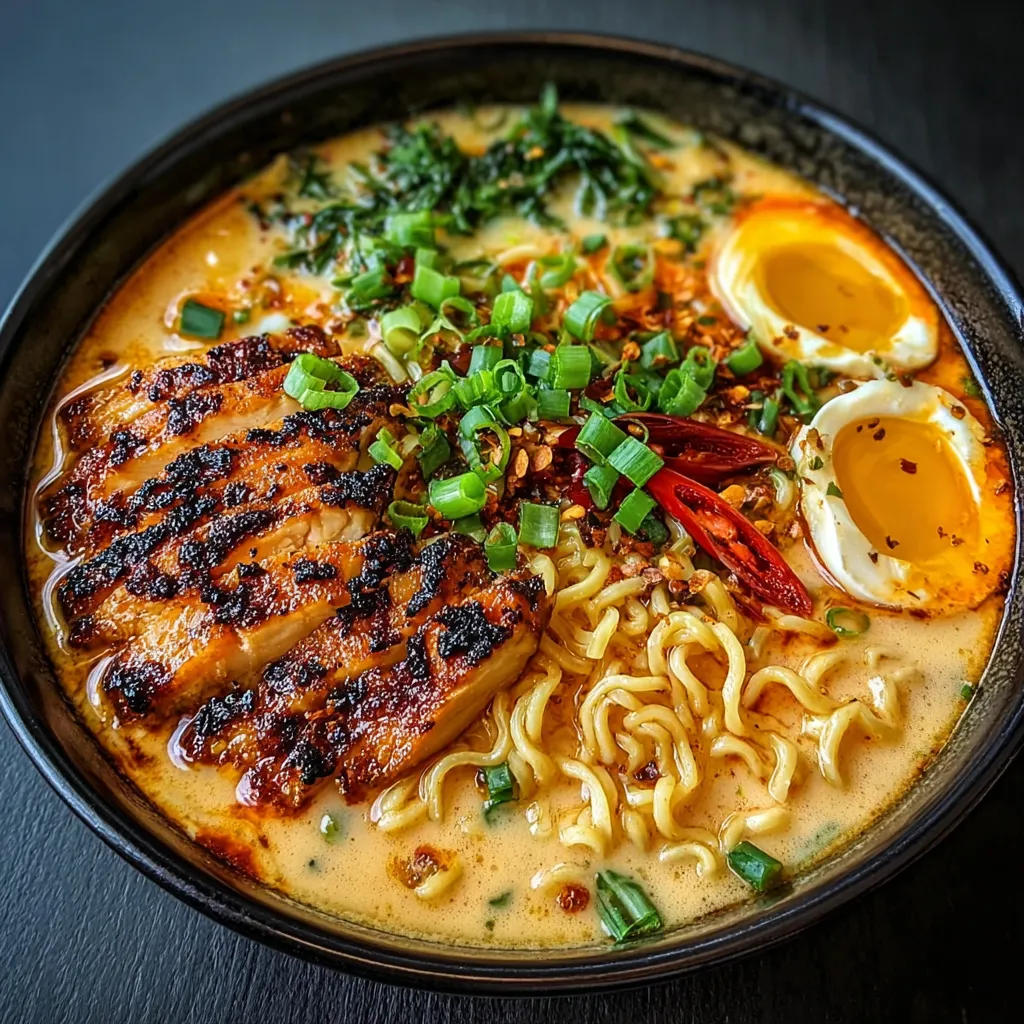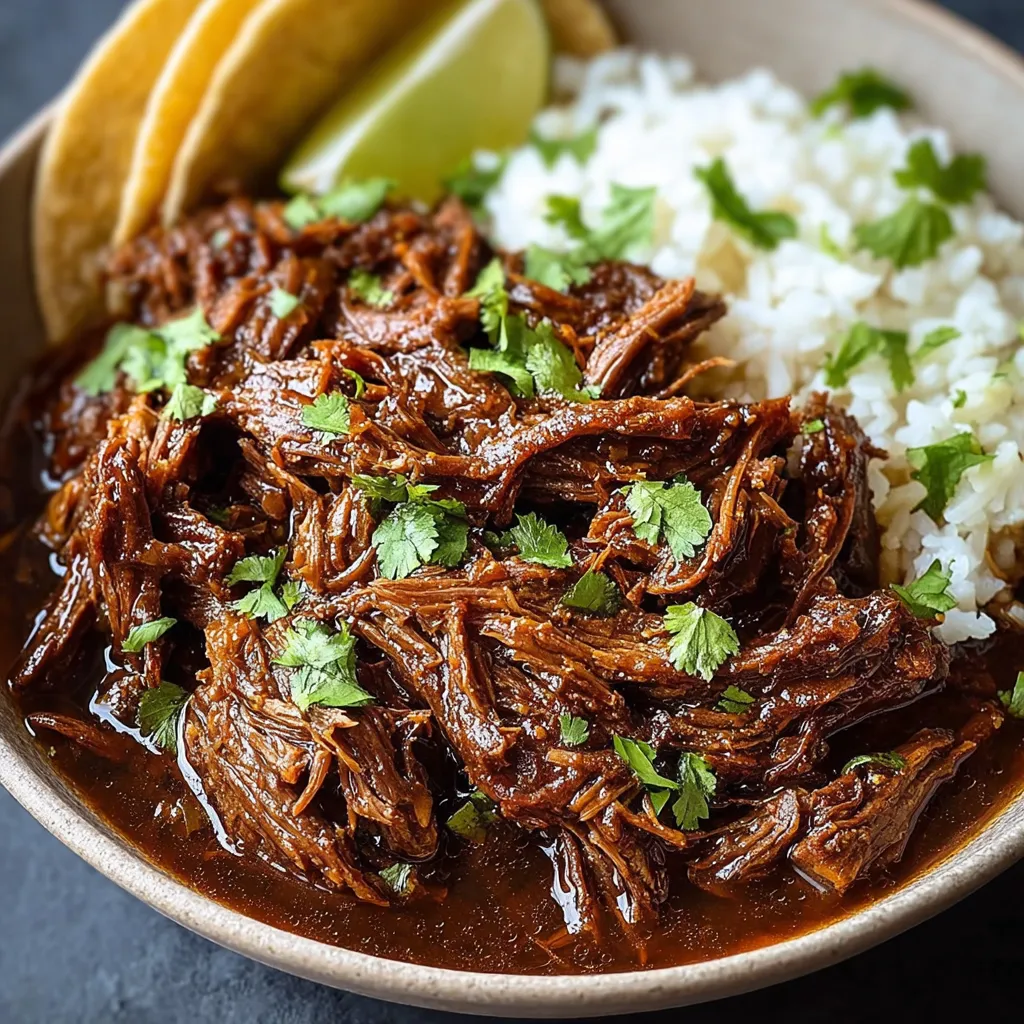I still remember the first time I tried real ramen – not the instant kind we all know and, let’s be honest, sometimes love, but the kind simmered for hours, bursting with savory goodness. It was a cold, rainy night, and that steaming bowl of Chicken Ramen was pure comfort in a bowl. And now, I’m going to show you how to recreate that same magic at home, with a recipe that’s totally achievable and guaranteed to warm you from the inside out.
Let’s Talk Ramen, My Friend
Okay, so you’re craving ramen, huh? I get it. That rich broth, those slurpable noodles, the perfectly soft-boiled egg… it’s a symphony of deliciousness. But before you reach for that instant packet (no judgment, we’ve all been there!), let’s talk about making *real* ramen. Don’t worry, I promise it’s not as intimidating as it sounds. We’re going to break it down step-by-step, and I’ll be here to guide you the whole way.
Why Make Your Own Chicken Ramen?

Seriously, why bother when you can just order takeout or grab a cheap package? Well, for starters, homemade ramen is *way* more flavorful. You control the ingredients, so you can customize it to your exact taste. Plus, it’s a lot healthier than most restaurant versions, which can be loaded with sodium and MSG. And let’s be honest, there’s something deeply satisfying about creating a restaurant-quality dish in your own kitchen.
Ingredients You’ll Need
Alright, let’s gather our supplies. This recipe is for a delicious and deeply flavorful Chicken Ramen. Don’t be scared by the list; most of these are pantry staples!
For the Chicken Broth:
- Chicken Bones: About 2 pounds (carcasses, backs, necks – whatever you can get your hands on). This is the foundation of your amazing broth!
- Chicken: 1 lb boneless, skinless chicken thighs or breasts
- Aromatics: 1 large onion (roughly chopped), 2 carrots (roughly chopped), 2 celery stalks (roughly chopped), 4 cloves garlic (smashed), 2-inch piece of ginger (peeled and sliced).
- Dried Shiitake Mushrooms: About 4-5, for that umami boost.
- Soy Sauce: ¼ cup, for depth of flavor.
- Mirin: 2 tablespoons, for sweetness and complexity.
- Sake (optional): 2 tablespoons, adds a subtle richness.
- Salt: To taste, for seasoning.
- Water: Enough to cover the chicken bones and vegetables.
For the Ramen Assembly:
- Ramen Noodles: About 8 ounces (fresh or dried, your choice!). Fresh is always best, but dried works just fine.
- Soft-Boiled Eggs: 2-4, depending on how many servings you’re making (and how much you love eggs!).
- Protein of Choice: The chicken that was used to make the broth is perfect. Slice or shred it for easy eating.
- Toppings: This is where you get creative! Here are some ideas:
- Green Onions: Sliced, for freshness and a pop of color.
- Bamboo Shoots: Adds a nice crunch and earthy flavor.
- Nori (Dried Seaweed): Adds a savory, slightly salty note.
- Bean Sprouts: For a refreshing crunch.
- Spinach: For added nutrients and color.
- Corn: For sweetness and texture.
- Chili Oil or Sriracha: For a spicy kick (if you’re into that!).
- Sesame Seeds: For nutty flavor and visual appeal.
Making the Magic: Step-by-Step Instructions
Okay, deep breath. Here we go! I’m going to walk you through each step of making the most amazing Chicken Ramen you’ve ever tasted.
Step 1: Building the Broth (The Heart of the Ramen)
- Roast the Chicken Bones (Optional, but Recommended): Preheat your oven to 400°F (200°C). Spread the chicken bones on a baking sheet and roast for about 30-40 minutes, or until they’re nicely browned. This adds a ton of flavor to the broth.
- Combine Ingredients: In a large stockpot or Dutch oven, combine the roasted (or unroasted) chicken bones, chicken, onion, carrots, celery, garlic, ginger, and dried shiitake mushrooms.
- Add Liquids: Pour in the soy sauce, mirin, and sake (if using).
- Cover with Water: Add enough water to completely cover the chicken bones and vegetables.
- Simmer, Simmer, Simmer: Bring the mixture to a boil, then reduce the heat to low and simmer for at least 3 hours, or even longer (up to 6-8 hours for an even richer broth). The longer it simmers, the more flavorful it will be. Skim off any foam or impurities that rise to the surface during the simmering process.
- Strain the Broth: Once the broth is done simmering, strain it through a fine-mesh sieve lined with cheesecloth (if you have it) to remove all the solids. Discard the solids.
- Season: Season the broth with salt to taste. Remember, you can always add more salt, but you can’t take it away!
Step 2: Preparing the Toppings
While the broth is simmering away, now is the perfect time to prep your toppings. This is where you can really customize your ramen to your liking.
- Cook the Eggs: Bring a pot of water to a boil. Gently lower the eggs into the boiling water and cook for 6-7 minutes for soft-boiled eggs. Immediately transfer the eggs to an ice bath to stop the cooking process. Peel the eggs carefully and set aside. You can marinate them in soy sauce and mirin for extra flavor, if you’re feeling fancy.
- Prepare the Chicken: Remove the chicken from the broth. Once it’s cool enough to handle, slice or shred it.
- Prep the Vegetables: Slice the green onions, bamboo shoots, and nori (if using). Wash and spin dry the bean sprouts and spinach. Cook corn if using fresh.
Step 3: Assembling Your Ramen Masterpiece
Okay, the moment we’ve all been waiting for! It’s time to put everything together and create your own amazing bowl of Chicken Ramen.
- Cook the Noodles: Cook the ramen noodles according to the package directions. Be careful not to overcook them; you want them to be slightly al dente.
- Warm the Broth: If the broth has cooled down, gently reheat it on the stovetop.
- Assemble the Bowls: Divide the cooked noodles among your serving bowls. Ladle the hot broth over the noodles.
- Add Toppings: Arrange the sliced chicken, soft-boiled egg (cut in half), and your desired toppings on top of the noodles and broth.
- Garnish: Sprinkle with sesame seeds and a drizzle of chili oil (if using).
- Serve Immediately: Slurp away and enjoy!
Tips and Tricks for Ramen Success
Okay, let’s talk about some common pitfalls and how to avoid them. I want your ramen to be perfect!
- Don’t Overcook the Noodles: Nobody likes mushy noodles! Cook them just until they’re al dente.
- Season the Broth Generously: The broth is the soul of the ramen, so make sure it’s well-seasoned. Taste it often and adjust the salt and soy sauce as needed.
- Don’t Be Afraid to Experiment with Toppings: Ramen is all about customization, so don’t be afraid to try different toppings and find your favorites.
- Make the Broth Ahead of Time: The broth can be made a day or two in advance and stored in the refrigerator. This actually allows the flavors to meld together even more.
- Freeze Leftover Broth: If you have leftover broth, you can freeze it for later use. It’s a great way to have a quick and easy ramen meal on hand.
- Spice it Up: For a kick, add a dash of chili oil, Sriracha, or gochujang to your ramen.
Variations and Adaptations
This recipe is a great starting point, but feel free to get creative and make it your own. Here are some ideas:
- Vegetarian Ramen: Omit the chicken and use vegetable broth instead. Add tofu or other vegetarian protein sources.
- Spicy Ramen: Add more chili oil or Sriracha to the broth. You can also use spicy chili paste or gochujang.
- Seafood Ramen: Add shrimp, scallops, or other seafood to your ramen.
- Richer Broth: For an even richer broth, add a knob of butter or a drizzle of sesame oil.
Serving Suggestions
Ramen is a complete meal on its own, but you can also serve it with some simple sides, such as:
- Edamame: Steamed and salted edamame is a classic Japanese appetizer.
- Gyoza: Pan-fried dumplings filled with pork or vegetables.
- Seaweed Salad: A refreshing and flavorful salad made with seaweed, sesame oil, and vinegar.
Other Delicious Chicken Dishes
If you’re loving chicken lately (and who isn’t?), here are a few other recipes you might enjoy. They’re all quick, easy, and packed with flavor!
- Craving some creamy pasta? Try this Boursin Chicken Pasta, it’s incredibly rich.
- For a quick and flavorful weeknight meal, you can’t go wrong with Sticky Garlic Chicken Noodles.
- If you’re looking for a simple yet satisfying dish, this Garlic Butter Chicken Pasta is a must-try.
- Another great pasta option is this Creamy Tomato Chicken Pasta, perfect for a comforting meal.
- Looking for something a little spicier? Check out this Spicy Chicken Fillet In Creamy Garlic-parmesan.
- And finally, for a unique and flavorful twist, give this Cajun Chicken Alfredo Orzo a try.
Troubleshooting Common Ramen Problems
Sometimes, things don’t go exactly as planned in the kitchen. Here’s how to troubleshoot some common ramen problems:
- Broth is Too Salty: Dilute the broth with water or unsalted chicken broth. You can also add a little bit of sugar or honey to balance out the saltiness.
- Broth is Too Bland: Add more soy sauce, mirin, or sake. You can also add a small amount of fish sauce or MSG (if you’re comfortable using it).
- Noodles are Mushy: Make sure you’re not overcooking the noodles. Cook them just until they’re al dente. If you’re using dried noodles, rinse them under cold water after cooking to stop the cooking process.
- Eggs are Overcooked: Be careful not to overcook the eggs. Cook them for 6-7 minutes for soft-boiled eggs. Immediately transfer the eggs to an ice bath to stop the cooking process.
Final Thoughts
So, there you have it! My ultimate recipe for homemade Chicken Ramen. I know it might seem like a lot of work, but trust me, it’s totally worth it. Once you taste that rich, flavorful broth and those perfectly cooked noodles, you’ll never go back to instant ramen again. Don’t be afraid to experiment and make it your own. Happy cooking!
Why should I make my own Chicken Ramen instead of buying it?
Homemade ramen is more flavorful because you control the ingredients and can customize it to your taste. It’s also healthier than restaurant versions, which can be high in sodium and MSG.
Can I make the chicken broth ahead of time?
Yes, the broth can be made a day or two in advance and stored in the refrigerator. This allows the flavors to meld together even more.
What can I do if my ramen broth is too salty?
If your broth is too salty, dilute it with water or unsalted chicken broth. You can also add a little sugar or honey to balance the saltiness.
What are some topping variations I can use for my ramen?
You can use sliced green onions, bamboo shoots, nori (dried seaweed), bean sprouts, spinach, corn, chili oil or Sriracha, and sesame seeds as toppings. Feel free to experiment!

ULTIMATE CHICKEN RAMEN RECIPE
Ingredients
Equipment
Method
- Preheat oven to 400°F (200°C). Spread chicken bones on a baking sheet and roast for 30-40 minutes, or until browned (optional).
- In a large stockpot or Dutch oven, combine chicken bones, chicken, onion, carrots, celery, garlic, ginger, and dried shiitake mushrooms.
- Pour in soy sauce, mirin, and sake (if using).
- Add enough water to cover the chicken bones and vegetables.
- Bring to a boil, then reduce heat to low and simmer for at least 3 hours (up to 6-8 hours for a richer broth). Skim off any foam or impurities.
- Strain the broth through a fine-mesh sieve lined with cheesecloth (optional) to remove solids. Discard solids.
- Season the broth with salt to taste.
- Bring a pot of water to a boil. Gently lower the eggs into the boiling water and cook for 6-7 minutes for soft-boiled eggs. Transfer eggs to an ice bath.
- Peel the eggs carefully and set aside.
- Remove chicken from broth. Slice or shred it once cooled.
- Slice green onions, bamboo shoots, and nori (if using). Wash and spin dry bean sprouts and spinach. Cook corn if using fresh.
- Cook ramen noodles according to package directions. Do not overcook.
- Gently reheat broth on the stovetop if needed.
- Divide cooked noodles among serving bowls.
- Ladle hot broth over the noodles.
- Arrange sliced chicken, soft-boiled egg (cut in half), and desired toppings on top of noodles and broth.
- Sprinkle with sesame seeds and a drizzle of chili oil (if using).
- Serve immediately and enjoy!




